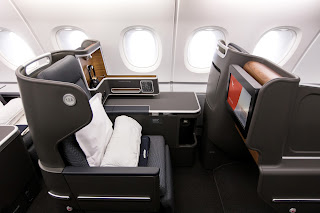 |
| Photo Qantas |
The Qantas Group in Australia has issued an update on its operations as the travel industry continues to recover from COVID-19 and network adjustments continue to flow through.
The airline group has listed some of the recent developments at both Jetstar and Qantas as more and more services come back online. Including slowly waking up the giant Airbus A380 aircraft from its enforced slumber and putting them back in service. However, Qantas is axing a number of domestic flights for July and August that it had previously scheduled, mainly due to a lack of staff, although capacity will still be above pre-covid levels.
 |
| Photo Qantas |
(All dates refer to 2022 unless otherwise indicated.)
Group International
- Group International continues to see strong demand, particularly as we move towards the northern summer peak and more countries relax restrictions.
- Group International capacity remains unchanged at just under 50 per cent of pre-COVID levels by the end of the fourth quarter of FY22 and rising to around 70 per cent by the end of the first quarter of FY23.
- Flights from Perth to London (QF9) resumed on 23 May, with one return flight per day operating through the Western Australian gateway after operating through Darwin since November last year. QF1 will reroute from Sydney-Darwin-London to operate Sydney-Singapore-London from 19 June and switch from a 787 back to an Airbus A380 service.
- Qantas will welcome a third A380 back from storage, which will return to service from 6 June on the Melbourne-Los Angeles route.
- Following the recent relaxation of New Zealand border restrictions, Qantas and Jetstar’s Tasman flying has ramped up significantly, including:
- Flights resumed from Australia to Queenstown and Wellington, and additional routes to Christchurch.
- Qantas has doubled the frequency of flights to Auckland from Melbourne and Sydney and is operating some flights from Brisbane with A330s.

Photo Qantas - Jetstar has restarted flights on all Australia to Auckland markets and will restart on the remaining Christchurch, Queenstown and Wellington markets in the next few weeks.
- As Japan starts to relax its borders restrictions:
- Jetstar will resume flights from Cairns-Tokyo (Narita) from 20 July and Cairns-Osaka from 26 July.
- Qantas will resume Sydney-Tokyo (Haneda) services from 12 September, and from Melbourne and Brisbane to Tokyo (Haneda) from the end of October, using A330s.
- Strengthening demand for travel to Bali has seen Jetstar restart direct services from all seven Australian cities it flew from pre-COVID and will be close to pre-COVID levels of capacity on the majority of routes by the end of June 2022.
- Qantas will increase frequency between Sydney and Manila from five flights per week to six from 20 June increasing to daily from mid-September.
- Qantas will resume flights from Sydney to Santiago from 30 October, with four flights per week using its 787s.

Photo Qantas - Qantas has pushed back the restart of flights between Sydney and San Francisco from 30 July to 30 October. Customers will be reaccommodated on flights via Los Angeles.
- As previously announced, the Qantas Group will start the following routes in the coming months:
- Qantas will start a seasonal Perth-Rome service from 22 June.
- Qantas will start flights from Sydney to Bengaluru (Bangalore) from 14 September.
- Jetstar will start a Sydney-Seoul service from 2 November and Qantas will start on the route on 10 December.
- Qantas will start flights from Melbourne to Dallas Fort Worth from 2 December.
Group Domestic
- Domestic travel continues to perform well with strong demand across all categories.
- Fuel prices have kept rising over the past month and require the Group to rebalance capacity and fares in response. The cuts to domestic flying levels for July and August are being deepened with capacity moving from 107 per cent of pre-COVID levels to 103 per cent. These additional reductions will progressively flow into industry booking and reservation systems in the coming days. The Group will continue to monitor market conditions and adjust capacity as needed.
- These adjustments are not expected to materially impact customers due to the large number of flights on most routes; those impacted will be contacted directly and offered different options. In practical terms, these changes will generally lead to a higher seat factor on flights across the Group.
Want me in your inbox? Follow here for email updates Air101 here.

